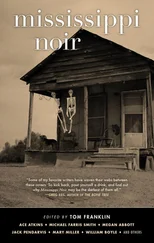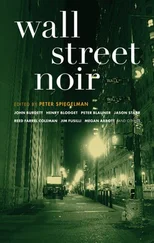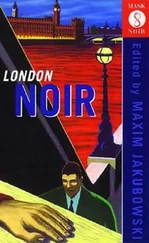A little boy, about two years old, sitting in the seat in front of him, was the only one who truly acknowledged the homeless man’s existence. The little boy looked over the back of the seat at the homeless man, and started playing peek-a-boo with him. The man cracked a bitter half-smile at the child.
Then he said it again: “I’m invisible!”
I was frankly kind of impressed that the guy would say something like this. I don’t expect a homeless guy on the bus to say such things, strange and existential — an awl to the heart. It made me think, He understands his condition . I thought about Ralph Ellison.
The homeless guy looked around and repeated it yet again, as he peered around at the rest of us on the bus.
The bus driver turned, scowled, but said nothing.
I glanced away just before the homeless man saw me looking. He knew I had looked. Luckily, the child distracted him again. When I turned back, I saw him smile again at the child, wider this time, a grisly green and yellow smile, the school colors of the university we were now passing.
Then the child’s mother, reading her own paper, realized what was going on. She sat the little boy straight down in his seat, flashing a harsh glance behind her.
This set the man off. His gestures suddenly grew more animated. It was if he had decided he would show us what an invisible homeless man on a city bus could do. He pointed out the window at a young woman in a short skirt and yelled to everyone in the bus: “Look at the titties on her! Lookit those titties! Let me off!”
The bus didn’t stop. Everybody stayed quiet. An older man across the aisle from me sighed and looked out the window. A cane was leaned against the empty seat next to him.
As we continued down Woodward, we approached the Fox Theatre. A block or two behind it, down Montcalm, I could catch a glimpse of the old Chin Tiki. By all rights, I should not have been able to see three blocks behind a major building to spot another, but behind the Fox, save for a fire station and an abandoned party store, there are mostly empty fields, now used for parking for the new stadiums, baseball and football, on the east side of Woodward. For that moment, I could see the Chin Tiki’s Polynesian façade, its doorway arched and pointed, the shape of hands praying. To whom? Some great invisible Tiki God? Perhaps Chango: God of fire, lightning, force, war, and virility.
That would be a good guess. For Marvin Chin actually opened his Tiki bar when the riots were going on, around the same time as the Mauna Loa. Fires were everywhere in the city then, but not at the Chin Tiki. It would survive to become quite the popular place. Our parents ate there (when they dared venture downtown), as well as the stars: Streisand, DiMaggio, Muhammad Ali.
It held on until 1980, when it too closed up. But unlike the Mauna Loa, which suffered an ignoble end as a lowly seafood restaurant that eventually burned to the ground, the Chin Tiki was simply shuttered, all its Tiki treasures packed up and mothballed inside. To this day, it is still sealed up, a Tiki tomb of Tutankhamen, still owned by the Chin family, who are supposedly waiting it out, waiting for the inevitable gentrification. It will happen. Or it will become another parking lot. In the meantime, the place had a brief resurrection when Eminem used it to film a scene for 8 Mile .
Chango works in mysterious ways.
“Hey, white man!”
Without thinking, I turn and look at the homeless man. Apparently, I’m not so invisible to him.
“What you doing here?”
Everyone on the bus is obliquely looking at me now. I have to say something.
“I’m going to work,” I reply coolly.
“What you on our bus for?”
“I’m just going to work,” I repeat, then turn away and look out the window at the old Tele-Arts. It was a newsreel theater in my mother’s time, but now it’s been turned into some sort of swanky nightclub.
“Motherfucker on our bus.”
“Shut your mouth,” says the woman with the child in front of him. She’s not sticking up for me, I know. She means that language in front of her child.
“Motherfucker.”
Slowly she turns back to him, eyes like smoldering carbon. “You want to be invisible? I’ll make you invisible.”
She says it in that way that many black women have, that way that makes most anybody shut up if they know what’s good for them. It certainly works on me, not that I invite that sort of thing. I mind my own business. It’s the only way to be when you’re the only white person on the bus, the cue-ball effect , as a friend of mine calls it.
The homeless man quiets down for the moment. We’re further down Woodward now. I look out the window at the storefronts, façades ripped off, gaping wide open into the street. They are being gutted for new lofts, many of them right across from the old J.L. Hudson’s site, where the behemoth department store was imploded. It is now replaced by a giant new skyscraper built by a software billionaire.
When things like this happen, the world starts to pay attention. Detroit is a city again! Back from the dead! Rising from the ashes! They can see us again. We were always there, but transparent, the way you can see right through the exoskeleton of the Michigan Central Train Station.
To the rest of the world, Detroit was just a place where Japanese film crews showed up every year to photograph the house fires on Halloween Eve, a.k.a., Devil’s Night. Other than that, they hardly saw us. We don’t even show up on the city temperature listings on the Weather Channel.
Further up, through one of the construction sites, I catch a glimpse of the old Statler Hilton Hotel, once proud home of Trader Vic’s. The building has been ignored for so many years, the windows are no longer even boarded up. The Michigan weather is not kind to a man-made tropical oasis. Inside, columns of bamboo once seemed to shore up rattan-wrapped walls. Glowing blowfish and a native kayak hung from the ceiling, along with colored globes encased in fishnets. At the front door, where a stoic Moai once stood sentry, there is rubble. Long pieces of terra-cotta tile still surround the front door, ragged with metal mesh, depicting the faces of Tiki gods, mouths contorted, faces squinched into impossible, pained grimaces.
A Tyree Guyton lavender polka dot has now been painted on the door. He of the Heidelberg Project, a block-long art project composed completely of discarded objects: a gutted polka dot Rosa Parks bus, a backyard of vacuum cleaners, a tree of shoes. These dots appear on abandoned buildings all over the city. Cheery carbuncles that make sudden art of blight. What else can you do?
The story for Trader Vic’s is much the same as the Chin Tiki and the Mauna Loa. When the white folks disappeared from downtown Detroit at the end of the workday in the ’70s, the clubs and restaurants foundered. The building is now slated for demolition, but it’s been a ghost for decades. “Demolished by neglect,” as the preservationists like to say around here. They say it a lot.
I am chagrined to relate that I have been part of that demolition as well. One night, in a drunken Tiki frenzy, some friends and I brought crowbars to this very site and ripped terra-cotta tiles from the façade of the building. No one was using them anymore, right? That’s what we told ourselves. It was wrong, and I knew it. I think of my offense to the Tiki gods when I look at my filched tile, which now resides in my backyard. Shame on me, I say. Shame. Yet these agonies of all our pasts will soon be ground into dust in the middle of the night, the preferred time to start the demolition of historic buildings here in Detroit.
Down one street, there is a sign on the side of a car wash: HAND WASH TO THE GLORY OF GOD.
Читать дальше












